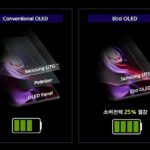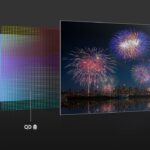ASIA ELECTRONICS INDUSTRYYOUR WINDOW TO SMART MANUFACTURING
Samsung Sets Out to Challenge Leadership in OLED TV Market
Samsung Display is set to start commercial rollout of QD-OLED panels effective from Nov. 30 in what the display maker said is the maiden effort of its catch-up drive to challenge global large-size OLED market leader LG Display.
The first QD-OLED panel will roll off the line at its 8.5G fabrication facility in the city of Asan, 100 km south of capital, on Nov. 30. will fabricate large-size QD-OLED panels for TVs out of 2,200×2.500mm glass substrate.
Called after the size of the glass, the 8.5G QD-OLED facility will fabricate large-size QD-OLED panels for TVs out of 2,200×2.500mm glass substrate.
The facility will churn out 55-inch and 65-inch QD-OLED panels at a monthly capacity of 30,000 glass substrates.
QD-OLED is a variation of OLED panels that comes built QD green and red color filters and self-luminescent blue OLEDs on top of TFT backplane, which are a grid of thin film transistors deposited on a glass substrate.
It is not like LG Display’s white OLED panels that pack a RGB color filter and a self-lighting white OLED layer on a TFT backplane.

Samsung insists that its QD OLED better represent colors than rival LG’s white OLEDs, a measure of color gamut, and also boasts of wider viewing angle.
Yet, LG’s white OLED has been credited as de facto standard panels for OLED TVs for years, as they have been the only commercially available ones ever.
So, LG Display almost monopolizes the market, supplying 99% of global OLED TV market.
Led by LG’s aggressive marketing campaign, OLED TV market is expected to reach 6.50 million units in 2021, a whopping 80% jump from a year ago. And there are 23 OLED TV makers doing business in the market, all of which are being supplied by LG Display.
The huge growth potential is a lure for Samsung to enter into large-size OLED panel market for TVs.
The initial prospect for Samsung’s foray looks bright, as Samsun Display will wholly supply its captive market Samsung Electronics, the world’s largest TV maker.
The final winner in this cat-and-mouse game will be whoever will be able to rally more TV makers behind its technology ecosystem.




